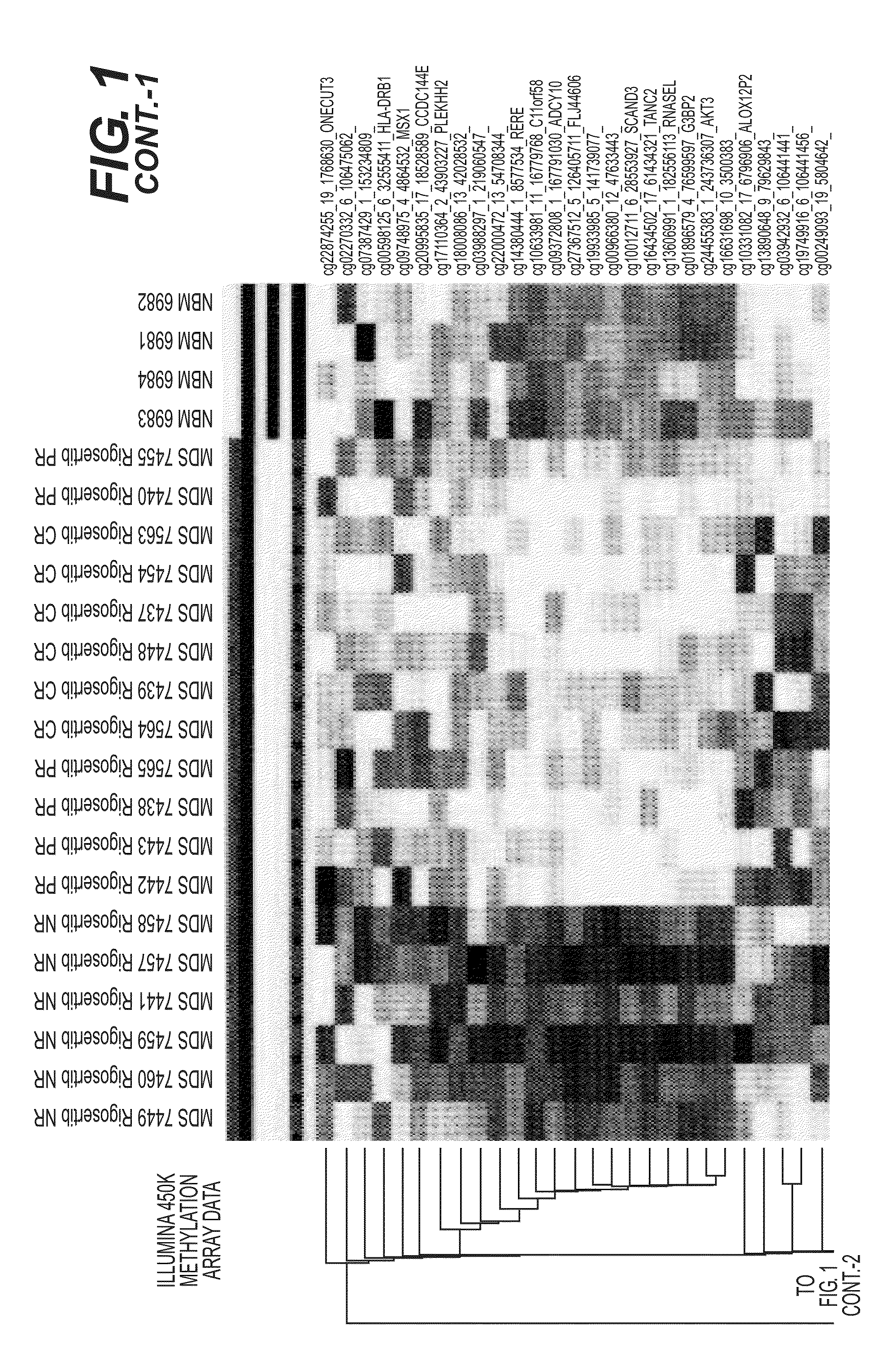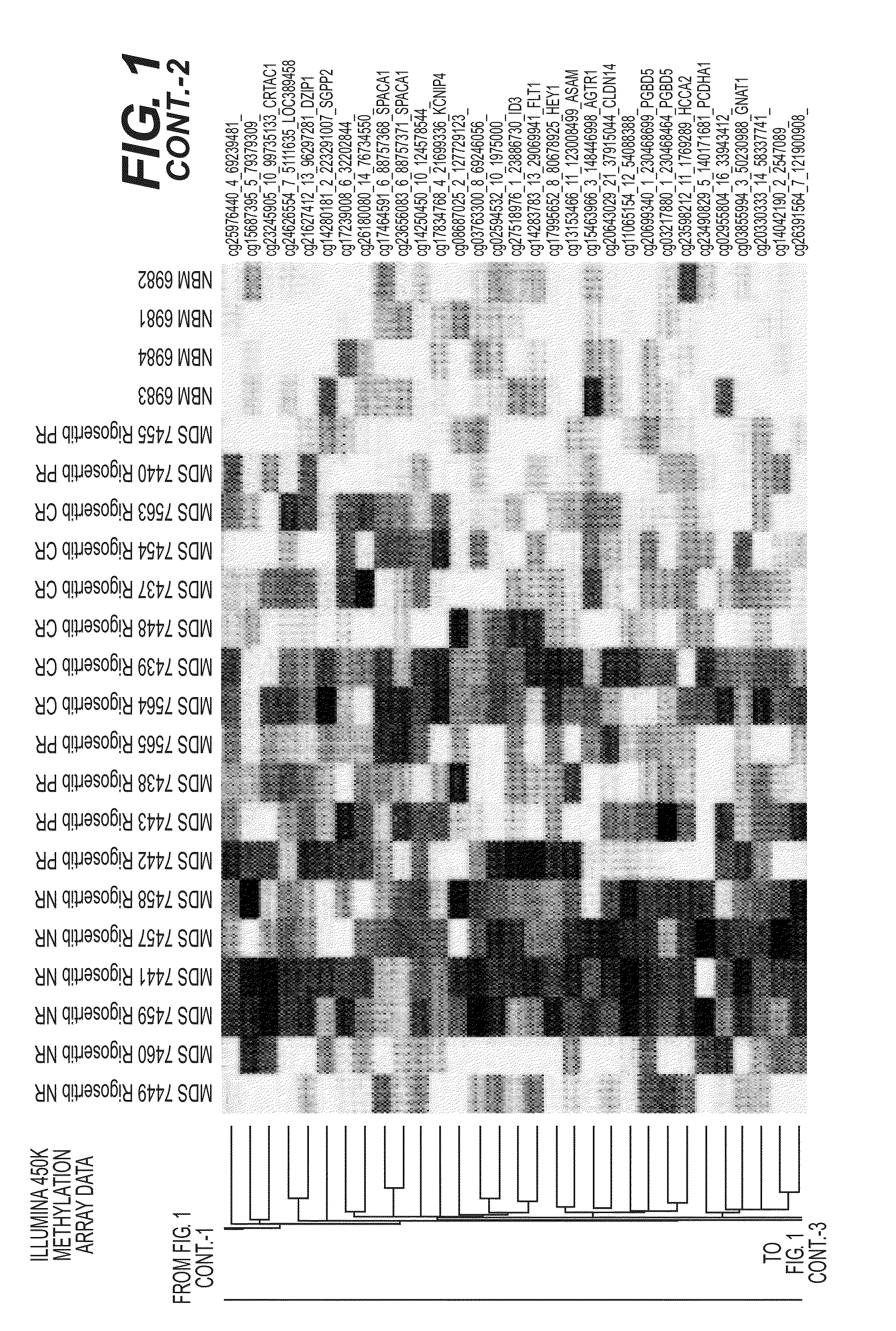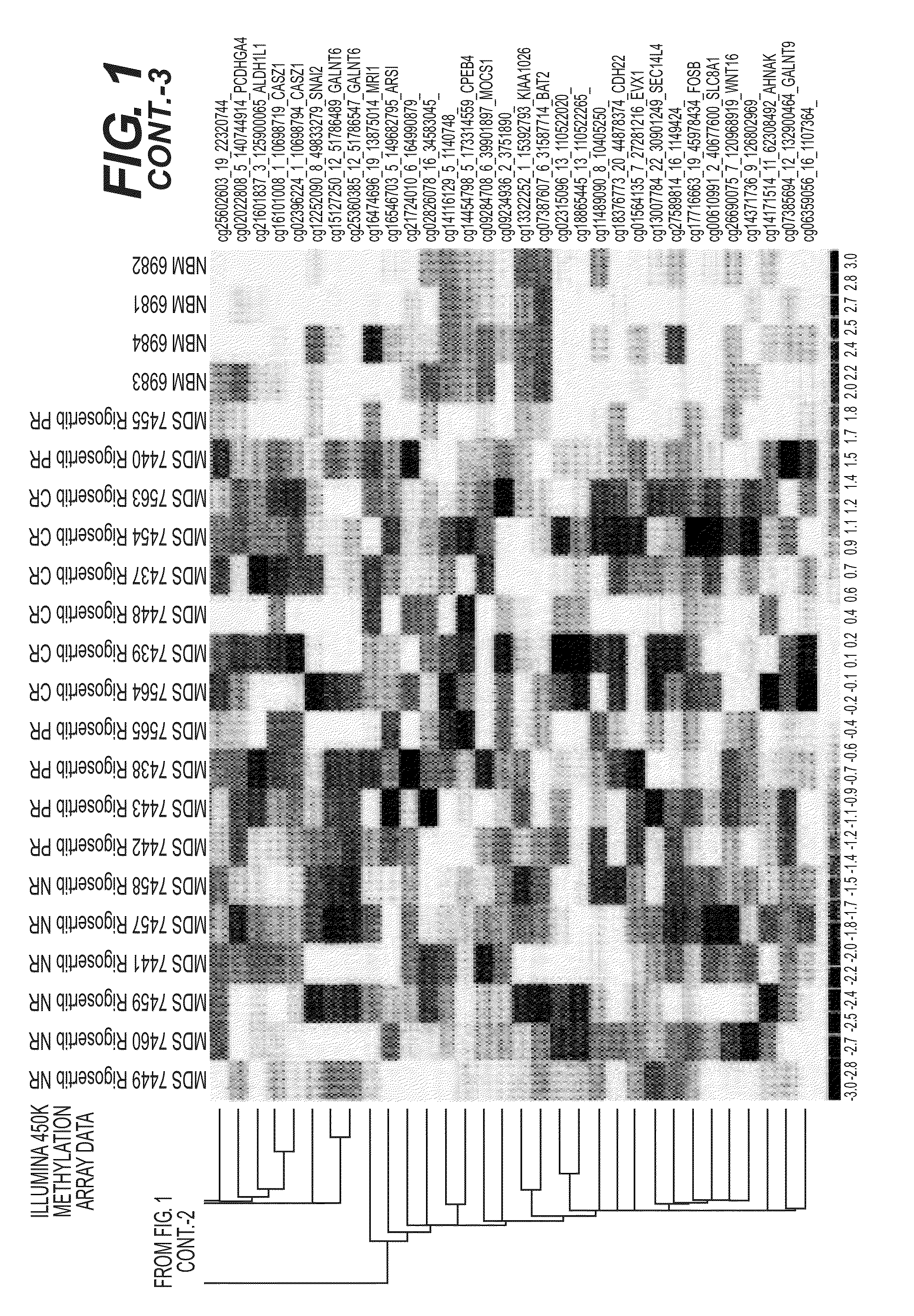Methods and compositions for predicting therapeutic efficacy of kinase inhibitors in patients with myelodysplastic syndrome or related disorders
a technology of myelodysplastic syndrome and kinase inhibitors, which is applied in the direction of biocide, biochemistry apparatus and processes, peptide/protein ingredients, etc., can solve the problems of mds patients often developing severe anemia, chemotherapeutic doses or radiation doses that not only fail to improve the therapeutic response, and contribute to side effects and resistance to therapy, etc., to achieve optimal
- Summary
- Abstract
- Description
- Claims
- Application Information
AI Technical Summary
Benefits of technology
Problems solved by technology
Method used
Image
Examples
example 1
Predictive Loci DNA Methylation Signature Profile (Illumina 450K Beadchips) of MDS Bone Marrow Biopsy Samples
[0093]Methods:
[0094]This study sought to identify DNA methylation markers that can predict the therapeutic response to a different, and an even more widely pertinent, class of anti-cancer drugs, namely broad-specificity tyrosine kinase inhibitors (TKI's) or a broad specificity kinase inhibitors. As used herein, “response” is defined by standard clinical criteria, importantly including amelioration of transfusion-dependent anemia, which is a major hallmark of myelodysplastic syndromes (MDS).
[0095]Patients with refractory MDS were biopsied and their bone marrow precursor biopsy samples subjected to DNA methylation profile analysis using a discrete panel of DNA methylation biomarkers comprising one or more genes selected from the group consisting of the differentially methylated genes listed in FIG. 1 and Tables 1, 2, 3, or 4, infra. The hyper-methylated status of the DNA methyl...
example 2
Association of Hypermethylated Genes with Responder Predictive Loci DNA Methylation Signature Profile (Illumina 450K Beadchips) of MDS Bone Marrow Biopsy Samples is Predictive of Response to Rigosertib
[0102]Methods:
[0103]Pre-therapy bone marrow mononuclear cells from 32 patients were analyzed using the Illumina 450K methylation array platform.
[0104]Results:
[0105]After adding one more complete responder (CR) and 9 more non-responder (NR) patients, to the series of MDS patient pre-therapy bone marrow biopsy samples being analyzed with DNA methylation profiling (Illumina 450K Beadchips), and analyzing the methylation values in this expanded sample set, seventeen (17) of the marker loci from the original set [(sample numbers 1-17, respectively (highlighted in bold)] persist as predictive of response with individual (marker-by-marker) T-test p-values0.10, as depicted in Table 2, infra. Additional potential marker loci [sample numbers 18-137, respectively (non-bolded)] are also detected i...
PUM
| Property | Measurement | Unit |
|---|---|---|
| refractory | aaaaa | aaaaa |
| length | aaaaa | aaaaa |
| fluorescent | aaaaa | aaaaa |
Abstract
Description
Claims
Application Information
 Login to View More
Login to View More - R&D
- Intellectual Property
- Life Sciences
- Materials
- Tech Scout
- Unparalleled Data Quality
- Higher Quality Content
- 60% Fewer Hallucinations
Browse by: Latest US Patents, China's latest patents, Technical Efficacy Thesaurus, Application Domain, Technology Topic, Popular Technical Reports.
© 2025 PatSnap. All rights reserved.Legal|Privacy policy|Modern Slavery Act Transparency Statement|Sitemap|About US| Contact US: help@patsnap.com



